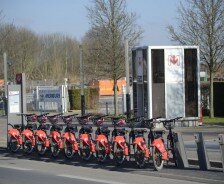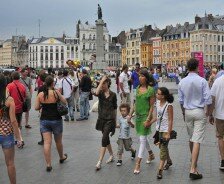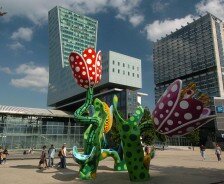
Population over 1.1 million – Métropole Européenne de Lille is a former manufacturing centre as well as a retail and finance centre. Métropole Européenne de Lille conurbation is France’s 4th-largest urban conglomeration and brings 85 municipalities together, in an area of over 600 km². Métropole Européenne de Lille represents 30% of the regional population. Métropole Européenne de Lille is also part of the European Grouping for Territorial Co-operation (EGTC) Eurometropole Lille-Kortrijk-Tournai (created in 2008), a cross-border area of more than 2 million inhabitants (with Walloon and Flemish regions).
The conurbation is ideally located as a transport and logistics hub and has the potential to be a commuter town for London, Paris and Brussels thanks to the presence of Eurostar and TGV high speed rail links. It is also very well placed on the motorway network in addition to being on the border with, and closely linked to Belgium.
Métropole Européenne de Lille features an array of architectural styles, some with Flemish influence, including the use of brown and red brick. In addition, many residential neighbourhoods consist of attached 2-3 story houses aligned in a row, with narrow gardens in the back. These architectural attributes, which are uncommon in France, help make Métropole Européenne de Lille a transition in France to neighbouring Belgium, as well as nearby Netherlands and England, where the presence of brick, as well as row houses or the Terraced house is much more prominent.
Métropole Européenne de Lille adopted few years ago a strong policy to develop alternative use for mobility such as public transport, cycle, walking and carpooling through its 85 municipalities to preserve environment and to promote a new way of moving.




